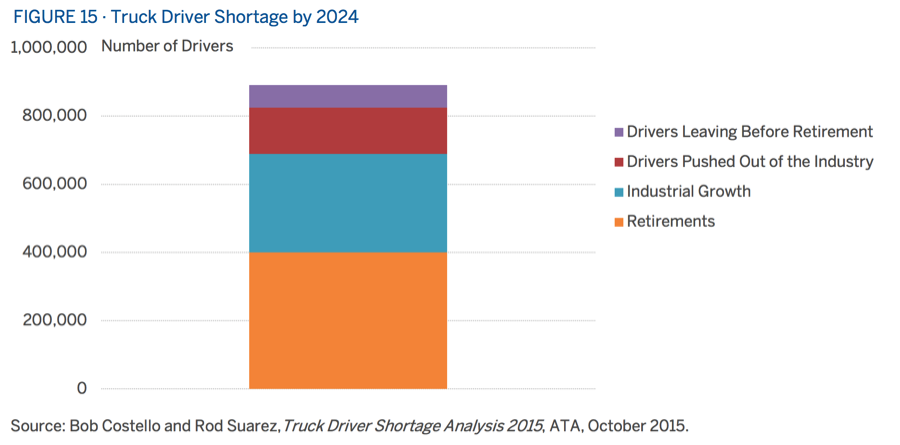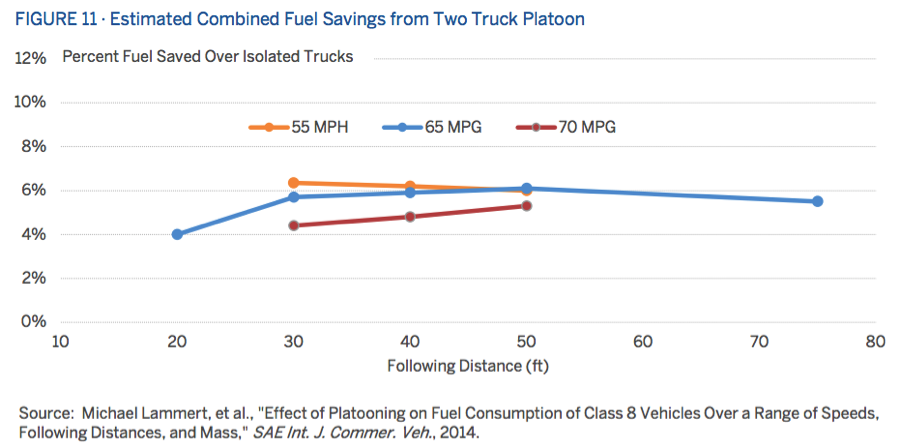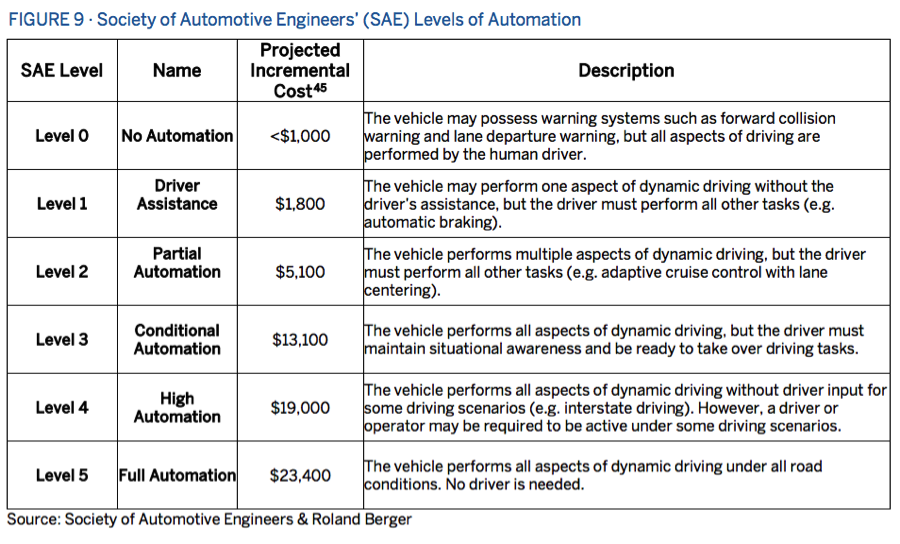November 9, 2017
Commercial trucking is likely to be one of the first sectors that benefits from vehicle automation and connectivity, according to a new report from Securing America’s Future Energy (SAFE).
While commercial trucks account for only 4 percent of vehicles on the nation’s roadways, long-haul trucks move more than 70 percent of all freight – and account for 13 percent of total U.S. petroleum consumption. SAFE suggests that emerging technologies in transportation, combined with shifting consumer preferences and concerns about energy independence, have made the trucking industry ripe for a new wave of innovation.
SAFE is a Washington, D.C.-based research organization that studies policy issues pertaining to U.S. energy security and how to reduce the transportation sector’s dependency on oil by increasing efficiency.
“The transportation sector is in the midst of a technological revolution and policymakers have an opportunity to ensure the trucking industry is given the flexibility it needs to maintain America’s competitive advantage and spur economic growth,” said Robbie Diamond, President and CEO of SAFE.
The organization argues that the trucking sector can reduce its oil dependence by using new vehicle designs, incorporating advanced driver assistance systems (ADAS), implementing connected vehicle and platooning technologies, and eventually deploying highly automated trucks.
But automation in trucking is a sore subject in Washington.
This year, both chambers of Congress have sped along separate bills to encourage the development of automated vehicles (AVs) – but those bills will only address passenger vehicles.
In the House, the argument for excluding commercial vehicles was that the Energy & Commerce Committee – which wrote the SELF DRIVE Act (H.R. 3388) only had jurisdiction over the National Highway Traffic Safety Administration (NHTSA), and not the Federal Motor Carrier Safety Administration (FMCSA).
While NHTSA regulates the design, construction, and performance of all motor vehicles, FMCSA is responsible for regulating how commercial vehicles are operated (e.g., requiring that a truck always has a human driver behind the wheel who is paying attention to the roadway).
However, there were more complex factors at play than just committee jurisdiction. Labor unions, led by the Teamsters, launched an aggressive lobbying effort over the summer to prevent the inclusion of trucks and buses in any AV legislation. Automating commercial vehicles, they argued, would trigger a mass displacement of human drivers – a concerning thought for politicians from the 29 states in which driving is the most popular job.
Nevertheless, Senate Commerce Chairman John Thune (R-SD) attempted to push for the inclusion of trucks and buses in the bill he co-authored with Sen. Gary Peters (D-MI), AV START (S. 1885). Thune went so far as to hold a hearing specifically addressing the impact of automated trucks on the workforce and transportation network – and then Sen. James Inhofe (R-OK) proposed an amendment to include commercial vehicles – but it was all to no avail. Inhofe ultimately withdrew his amendment, saying that he knew he didn’t have the votes.
For now, it appears that automated trucks are off the table in this round of AV legislation. It is expected that Congress will begin work on a separate bill to address commercial vehicles in the next year, following the passage of the pending AV legislation. (Ed. Note: ETW has compiled a side-by-side comparison of the House and Senate AV bills that can be accessed here.)
The report suggests that these fears of imminent worker displacement may be overblown. The trucking industry is currently 50,000 drivers short, according to the American Trucking Associations (ATA), which will become even more of an issue as consumer behavior and demands on the industry shift with the growth of ecommerce. Even worse, the median age of long-haul truckers is 49 – seven years older than the median U.S. worker. This has led ATA to estimate that the industry will need 890,000 new drivers to replace aging drivers as they retire.

(Source: SAFE)
Moreover, implementing automated driving technologies in trucks may actually attract more drivers. SAFE argues that even level 3 vehicle automation, in which the vehicle manages the driving task but the human operator must still be prepared to take over at any time, could “help to alleviate the driver shortage problem, as the driving experience becomes easier and less burdensome… only minor labor impacts will result from level 3 automation.”
Even when trucks are fully autonomous, there will likely still be a need for a human in the truck. “Many truck drivers do more than just drive,” the report says, pointing to other critical responsibilities like inspecting freight loads, maintaining equipment, and conducting deliveries at each destination.
Managing the sophisticated equipment that allows trucks to drive themselves might even make truckers more valuable if they have to obtain specific certifications or training to do so. This could be the case for not only automated trucks but also for platooning, which leverages connected vehicle technology to allow trucks to closely follow each other.
When platooning at highway speed with a gap between 30 to 70 feet, trucks would not only be able to increase their miles per gallon, but also use space on the highway more efficiently and potentially reduce collisions between trucks.

(Source: SAFE)
This technology has already been demonstrated by Peloton in the U.S., but faces significant regulatory challenges. While there are no federal policies that prevent platooning, some states have laws that require trucks to maintain minimum following distances.
Some officials also remain wary of the safety risks of platooning. Last year, Missouri Governor Jay Nixon vetoed a bill to establish a pilot program, stating that the technology remains unproven. Nixon cited the fatal Tesla Autopilot accident as an example of how these nascent technologies could be hazardous for road users.
“The risk associated with automated vehicles are even greater considering the size of long-haul trucks and the catastrophic damage that could occur if the technology fails,” Nixon said. “Using Missouri as a testing ground for long-haul trucks to deploy this unproven technology is simply not a risk worth taking at this time.”
As platooning technology is developed and increasingly proven to be safe, SAFE recommends that states should grant following distance exemptions to truck platoons in order to allow the technology to proliferate. And, if states do not grant these exemptions and remove barriers to platooning, SAFE suggests that Congress should consider legislation that would explicitly permit platooning on federal highways.
The report also included a useful chart that evaluates the incremental costs of equipping a truck to be capable of operating at each level of driving automation:

(Source: SAFE)
The full report, including additional recommendations for policymakers to advance innovation in commercial vehicles, can be downloaded here.






